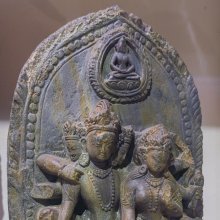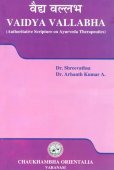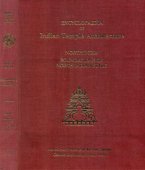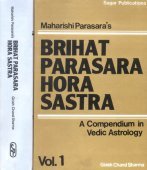Simple: 1 definition
Introduction:
Simple means something in Hinduism, Sanskrit. If you want to know the exact meaning, history, etymology or English translation of this term then check out the descriptions on this page. Add your comment or reference to a book if you want to contribute to this summary article.
Images (photo gallery)
(+18 more images available)
In Hinduism
Yoga (school of philosophy)
Source: ORA: Amanaska (king of all yogas): A Critical Edition and Annotated Translation by Jason BirchBeing Simple (i.e., Stupid) refers to one of the tricks used by Yogins to hide their powers (siddhi), according to the Dattātreyayogaśāstra verse 101.4 and Yogatattvopaniṣat 1.76-78.—Accordingly, while discussing the concerns about the use of Siddhis: “[...] The Yogin should behave among people as though dumb, simple (mūḍha) or deaf, in order to keep his powers hidden. If not, then there will surely be many students [who will] undoubtedly ask the master of Yoga [to intervene] in their own affairs. [Because of this,] he will become preoccupied with carrying out their actions and forgetful of his own [Yoga] practice”.

Yoga is originally considered a branch of Hindu philosophy (astika), but both ancient and modern Yoga combine the physical, mental and spiritual. Yoga teaches various physical techniques also known as āsanas (postures), used for various purposes (eg., meditation, contemplation, relaxation).
See also (Relevant definitions)
Starts with: Simple Path, Simple-leaved grape, Simple-spined carissa.
Full-text (+990): Narayanatela, Ekavidha, Angarasa, Shuddha, Bhola, Saralavyaja, Vyastapada, Bhabada, Ajanata, Avyasta, Sadharan, Devabhola, Aikagunya, Uthala, Sarala, Bhavartha, Apancikrita, Aushadha, Rajayoga, Pakayajna.
Relevant text
Search found 383 books and stories containing Simple; (plurals include: Simples). You can also click to the full overview containing English textual excerpts. Below are direct links for the most relevant articles:
The Gospel of Buddha (by Paul Carus)
The Jataka tales [English], Volume 1-6 (by Robert Chalmers)
Jataka 228: Kāmanīta-jātaka < [Book II - Dukanipāta]
Jataka 91: Litta-jātaka < [Book I - Ekanipāta]
Jataka 69: Visavanta-jātaka < [Book I - Ekanipāta]
Indian Medicinal Plants (by Kanhoba Ranchoddas Kirtikar)
Introduction, part 1: History of the study of medicinal plants
64. Meconopsis nipalensis, D.C. < [Papaveraceae (poppy family)]
Introduction, part 3: The materia medica of Sanskrit literature
Folklore of the Santal Parganas
Chapter CLXIV - The Transmigration of Souls < [Part V]
Chapter CLX - The Beginning of Things < [Part V]
Chapter IV - The Cruel Stepmother < [Part I]
Charaka Samhita and Sushruta Samhita (by Nayana Sharma)
Drugs and Diet (Introduction) < [Chapter 7]
Ritualism in the Medical Texts < [Chapter 8]
Processing of medicines < [Chapter 7]
Ramayana of Valmiki (by Hari Prasad Shastri)
Chapter 50 - Garuda liberates Rama and Lakshmana < [Book 6 - Yuddha-kanda]
Chapter 74 - Hanuman goes to the Mountain of Medicinal Herbs < [Book 6 - Yuddha-kanda]
Chapter 108 - A brahmin utters words contrary to dharma < [Book 2 - Ayodhya-kanda]
Related products
(+12 more products available)










